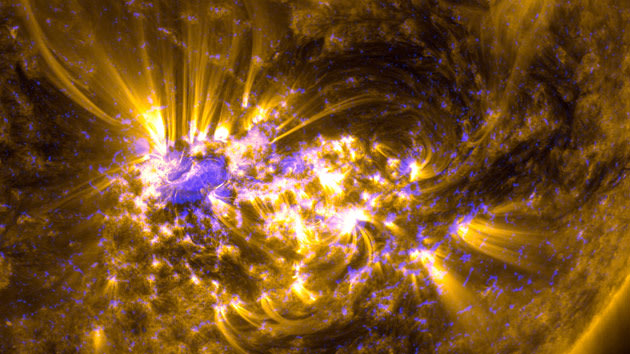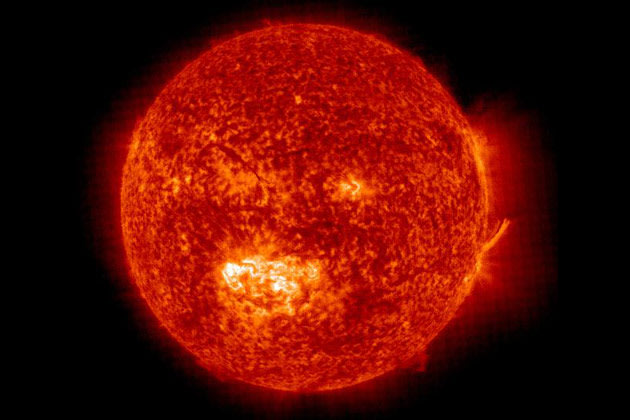Major Solar flare erupts from giant sunspot
A strong solar storm is battering the Earth and could amplify the planet’s northern lights displays.The solar storm erupted from the giant sunspot AR1520 (Active Region 1520) which is actually a group of sunspots that at its peak may have stretched across 186,000 miles of the sun’s surface. The eruption sent a wave of charged solar plasma toward Earth and is not expected to pose major risks to satellites and spacecraft in orbit, or power systems on Earth.
The sun is pictured in this NASA handout satellite image taken July 12, 2012, shortly before it released an X-class flare. This image combines two sets of observations of the sun from the Solar Dynamics Observatory – light in the 171 Angstrom wavelength, which shows off giant loops of solar material overlying the middle of the sun over the region where the flare originated and a magnetogram, which highlights magnetic fields on the sun. NASA’s estimates indicate that the coronal mass ejection associated with this flare is travelling in an Earth direction at over 850 miles per second.

This July 11, 2012 image of the Sun provided by NASA’a Solar and Heliospheric Observatory shows gigantic sunspot AR 1520. One of the biggest sunspots in years, AR1520, is turning toward Earth and harbors energy for strong solar flares. NOAA forecasters estimate an 80% chance of M-flares and a 25% chance of X-flares during the next 24 hours

This NASA image, captured by the Solar Dynamics Observatory, shows the M5.3 class solar flare that peaked on July 4, 2012, at 5:55 AM EDT. The flare is shown in the 131 Angstrom wavelength, a wavelength that is particularly good for capturing the radiation emitted from flares.
An X1.4 class flare erupted from the center of the sun, peaking on July 12, 2012 at 12:52 PM EDT. It erupted from Active Region 1520 which rotated into view on July 6.